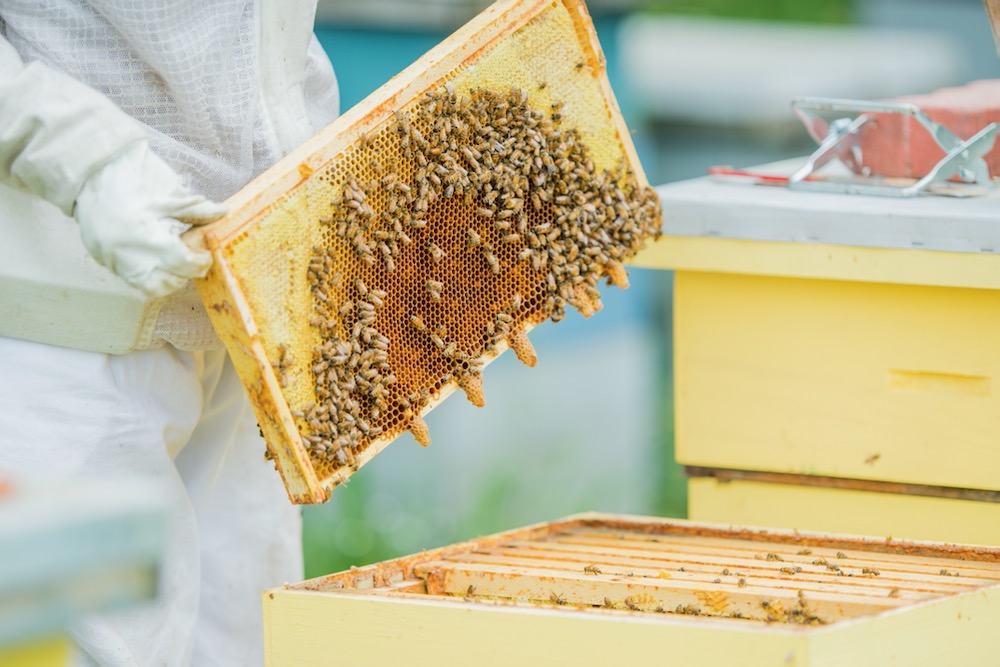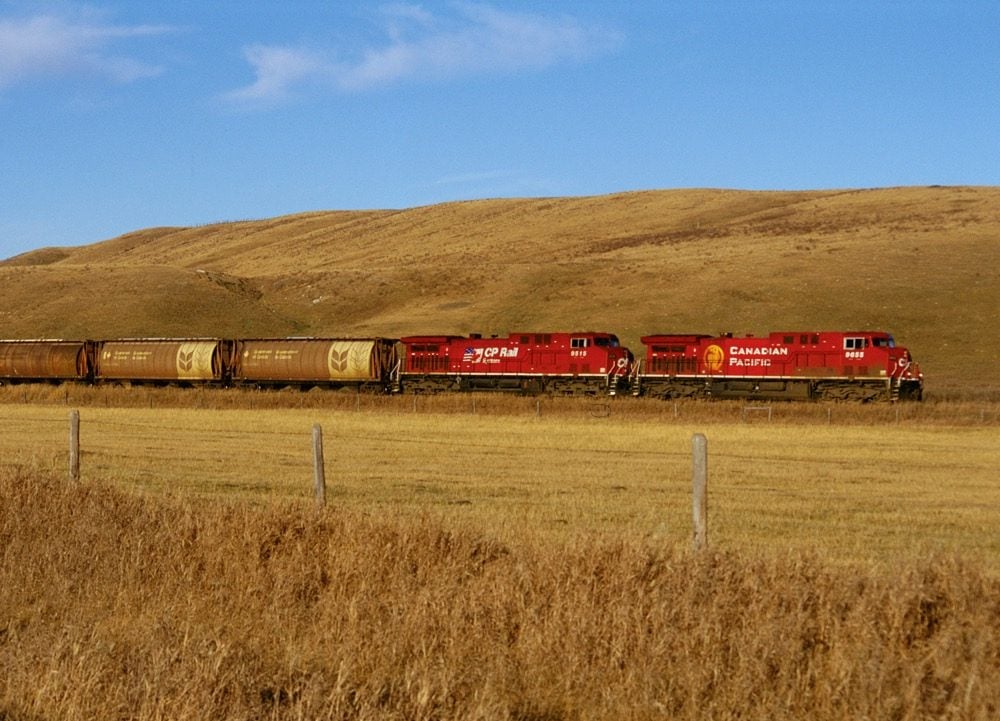COMMENT: How honeybees can help us monitor pollution across Canada

Canada has more than 13,000 beekeepers with almost 1,000,000 beehives spread across every province. Together, they produce about 40,000,000 kilograms of honey each year. That is enough for roughly one kilogram of honey for every Canadian.
When honeybees forage, they collect nectar, pollen and water from nearby flowers. These flowers contain traces of the chemicals in the soil and water where they grow.
As honeybees fly, they also pick up dust and other tiny particles from the air and any surfaces they touch. Some of these particles include metals from human activities like burning fossil fuels or industrial pollution.
Read Also

CPKC overshoots grain revenue entitlement, CN comes up short
Canadian National Railway Company (CN)’s grain revenue fell below its annual entitlement, and Canadian Pacific Kansas City Railway Company (CPKC) overshot its entitlement in the 2023-2024 crop year.
By the time the bee has returned to its nest it is covered, inside and out, with the chemicals found in its local area. In this way, the honey in a beehive is a mix of everything the bees gather within about a three-kilometer area. Learning how to read the composition of honey will allow us to understand the chemical makeup of any given environment.
The honey produced by the tireless work of the honeybee is nothing short of an untapped goldmine of environmental data that could help us better understand the spread of environmental pollutants.
Bees can help map pollution
Our research — focusing on the Manchester area in the U.K. — proposes using honey as a window into the chemical make-up of a local area. Our team comprised of researchers from Dalhousie University in Canada and the University of Manchester in the United Kingdom. We measured metal concentrations in honey collected by citizen scientist beekeepers in northwest England.
Greater Manchester was a major industrial powerhouse. Unfortunately, historical industrial activities often leave behind a legacy of pollution and have been linked to environmental contamination.
Metal contaminants in soil and water from historical industrial activities do not easily disappear. They can be remobilized as dust during activities like building and road construction, or farming. Likewise, metals in surface water and groundwater may also be transferred into flowers via plant roots.
Honey samples were collected by local citizen scientist beekeepers to help determine the distribution of metal pollution across Greater Manchester. Honey samples were gathered over a single season to establish baseline metal concentrations from urban, industrial, residential and agricultural zoning districts. This baseline data can be used in future studies to monitor long-term trends and changes in metal concentrations in the environment.
Average arsenic and cadmium concentrations in Manchester were higher than global averages. Cadmium and lead concentrations were also higher than the recommended World Health Organization and United Nations Food and Agriculture Organization guidelines.
These high metal concentrations reflect Manchester’s heavy industrial past. They also reveal pollution patterns from current human activities like transportation and construction.
Natural biomonitors
Rapid urbanization, transportation, industrialization and other human activities has resulted in increased global water, air and soil pollution. Interest in measuring local and global pollution is also increasing.
Current pollution monitoring and reporting in Canada is expensive and focuses on air pollution monitoring under the National Air Pollution Surveillance program. This program was established in 1969 to monitor and assess the long-term air quality in populated regions of Canada and the dataset can be used by governments to assess air pollution trends.
The National Air Pollution Surveillance network comprises 286 sites in 203 communities located in every province and territory across Canada and is managed by the provinces, territories and some municipal governments.
Pollutant releases to air and water from industrial facilities are self-reported by the industries themselves under the National Pollutant Release Inventory. However, this inventory has been criticized for under-reporting of pollutants, and a lack of information related to how toxic the pollution can be.
Because these traditional methods can be expensive and time-consuming, government agencies and researchers need cost-effective monitoring tools to holistically track environmental pollutants such as heavy metals. Our research suggests that honey could be just the cost-effective monitoring tool governments are looking for.
Researchers in Vancouver have already run studies to measure metals like lead and cadmium in honey from hives in Vancouver’s downtown core. Analysis in 2019 found that the honey was clean, well below global averages for heavy metals like lead.
Although the honey in downtown Vancouver was perfectly safe to eat, they also discovered higher levels of metals in honey collected from nearby industries or densely populated areas. Efforts to map pollution using honey in Australia and Italy have also been effective.
Biomonitoring pollution in Canada
Because bees collect nectar, pollen and water from flowers within a three-kilometer area, they offer a seasonal snapshot of local environmental pollution.
Although there are nearly 300 National Air Pollution Surveillance sites across Canada, there are nearly one million bee hives offering even greater national coverage. These cost-effective pollution monitoring sites would complement existing pollution monitoring networks.
With beekeeping rising in popularity, this allows for community participation in biomonitoring studies like ours. Canada’s more than 13,000 beekeepers are a critical untapped resource of citizen scientists that could be vital to measuring long-term trends of harmful metals and other contaminants across Canada.
—Tony Robert Walker is a professor at the School for Resource and Environmental Studies at Dalhousie University. Simon Harper is a professor of computer science at the University of Manchester.
Source: Farmtario.com

